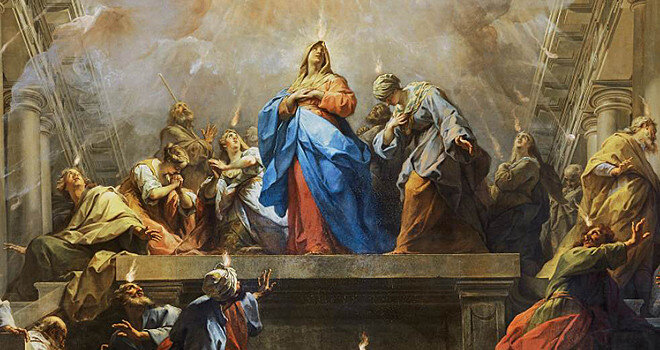The Sacrament of Confirmation completes the rites of Christian Initiation into the faith by a special outpouring of the Holy Spirit.
For young people: It is common to receive this sacrament in grade 7, however, older students may also request to be sealed with the Holy Spirit when they are ready. Registration for the annual Confirmation for students with the Bishop usually happens in January. This will be announced in the bulletin. A link to register will be posted on the homepage of the website for a period of time. Outside of this. you may contact the office to request more information.
For adults: book an appointment to meet with the priest online or send an email to talk about the steps for making your confirmation.
A Summary of the Doctrine on Confirmation
265. What place does Confirmation have in the divine plan of salvation?
In the Old Testament the prophets announced that the Spirit of the Lord would rest on the awaited Messiah and on the entire messianic people. The whole life and mission of Jesus were carried out in total communion with the Holy Spirit. The apostles received the Holy Spirit at Pentecost and proclaimed “the great works of God” (Acts 2:11). They gave the gift of the same Spirit to the newly baptized by the laying on of hands. Down through the centuries, the Church has continued to live by the Spirit and to impart him to her children.
266. Why is this sacrament called Chrismation or Confirmation?
It is called Chrismation (in the Eastern Churches: Anointing with holy myron or chrism) because the essential rite of the sacrament is anointing with chrism. It is called Confirmation because it confirms and strengthens baptismal grace.
267. What is the essential rite of Confirmation?
The essential rite of Confirmation is the anointing with Sacred Chrism (oil mixed with balsam and consecrated by the bishop), which is done by the laying on of the hand of the minister who pronounces the sacramental words proper to the rite. In the West this anointing is done on the forehead of the baptized with the words, “Be sealed with the gift of the Holy Spirit”. In the Eastern Churches of the Byzantine rite this anointing is also done on other parts of the body with the words, “The seal of the gift of the Holy Spirit”.
268. What is the effect of Confirmation?
The effect of Confirmation is a special outpouring of the Holy Spirit like that of Pentecost. This outpouring impresses on the soul an indelible character and produces a growth in the grace of Baptism. It roots the recipient more deeply in divine sonship, binds him more firmly to Christ and to the Church and reinvigorates the gifts of the Holy Spirit in his soul. It gives a special strength to witness to the Christian faith.
269. Who can receive this sacrament?
Only those already baptized can and should receive this sacrament which can be received only once. To receive Confirmation efficaciously the candidate must be in the state of grace.
270. Who is the minister of Confirmation?
The original minister of Confirmation is the bishop. In this way the link between the confirmed and the Church in her apostolic dimension is made manifest. When a priest confers this sacrament, as ordinarily happens in the East and in special cases in the West, the link with the bishop and with the Church is expressed by the priest who is the collaborator of the bishop and by the Sacred Chrism, consecrated by the bishop himself.
~From the Compendium to the Catechism of the Catholic Church


